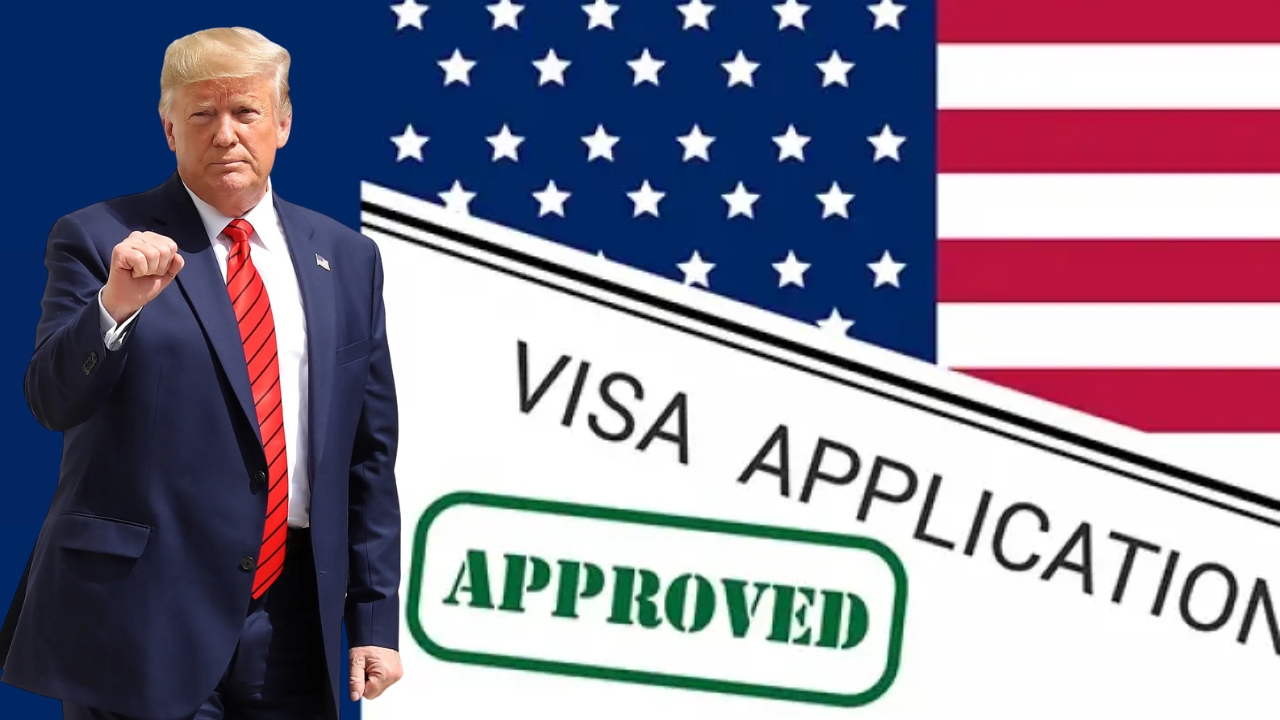If you’re thinking of working in the U.S. in 2025, you’re entering a shifting landscape. The U.S. government has already introduced new rules, some of which take effect in 2025 (or already have), and others that are being proposed. Honestly, it feels like every time you think you understand the H-1B or H-2B scheme, a new proclamation or regulation knocks your assumptions out of the park.
To be fair, many of the changes are aimed at tightening oversight, ensuring labor protections, and balancing U.S. worker interests. On the flip side, these changes raise new barriers for employers and applicants alike. In this article, I’ll walk you through the updated regulations, the visa categories you should watch, and a step-by-step roadmap to applying. Let’s dive in.
Key Updated Regulations in 2025 (What’s New & What’s Changed)
Before you jump into the process, you need to grasp the major regulatory shifts. These changes are already affecting how U.S. employers and foreign workers strategize.
| Regulation / Change | Effective Date / Status | What’s Different | Why It Matters |
|---|---|---|---|
| H-1B Final Rule & Revised I-129 | January 17, 2025 | The Department of Homeland Security issued a new “final rule” for both H-1B and H-2 programs, modernizing filing rules, strengthening oversight, and updating Form I-129. | The procedural foundation has shifted — older guidance may no longer be accurate. |
| H-2B (Temporary Non-Agricultural) stricter enforcement | January 17, 2025 | USCIS may deny H-2B petitions for petitioners with serious labor law violations. | Employers need clean track records or risk denials. |
| $100,000 Fee for New H-1B Petitions | September 21, 2025 | Any new H-1B petitions filed from outside the U.S. will need an extra $100,000 payment by the employer (unless exempt). | This is perhaps the biggest barrier for foreign nationals seeking new entry via H-1B. |
| Restrictions on Entry of Certain H-1B Workers | From the same proclamation (Sept 21, 2025) | H-1B workers will be barred from entry unless the employer pays the fee or an exemption is granted. | Even approved petitioners might be blocked from entering if the rules aren’t followed. |
| Interview Waiver Adjustments | September 2, 2025 onward | The U.S. State Department has tightened eligibility for visa interview waivers: more applicants will now require in-person interviews. | Adds more bureaucracy and waiting times in embassies / consulates. |
| Foreign Nationals Registration Rule | April 11, 2025 | Certain foreign nationals in the U.S. must register online with DHS if staying more than 30 days, even if they already hold some status. | It’s additional compliance burden — missing it can cause trouble. |
So yes — 2025 is not a “business as usual” year when it comes to U.S. work visas.
The Major Visa Categories for Work (with 2025 Considerations)
When people say “U.S. work visa,” most often they refer to H-1B (specialty occupation). But there are several others. Below are a few key ones, and what you need to watch out for in 2025.
| Visa Type | Purpose / Use Case | Key 2025 Notes / Changes |
|---|---|---|
| H-1B (Specialty Occupation) | For roles requiring specialized knowledge (engineering, IT, science, medicine, etc.) | Must now include a $100,000 employer fee for new petitions filed from Sept 21, 2025. Exemptions may apply under “national interest” criteria. |
| H-2B (Temporary, non-agricultural) | For temporary or seasonal non-agricultural jobs (hospitality, landscaping, etc.) | Stronger enforcement: petitions may be denied if prior labor violations exist. |
| Other categories (e.g. L-1, O-1, etc.) | Intra-company transfers, extraordinary ability, etc. | While not in the spotlight, these may be increasingly attractive alternatives given constraints on H-1B. |
| Work portions of immigrant (“green card”) paths | EB categories like EB-1, EB-2, EB-3 | These still run via the employment-based green card process, with visa bulletin backlogs and priority dates. |
If your field qualifies for an O-1 (extraordinary ability) or L-1 (intra-company transfer), those routes may face fewer disruptions than H-1B in 2025, though regulations can shift.
Step-by-Step Guide to Applying (2025 Edition)
Let me walk you through a general process. The exact steps and timing depend on which visa you’re applying for, the U.S. consulate involved, and the employer’s internal processes. But here’s a typical chronological roadmap:
- Employer identifies the need / job offer
The U.S. employer (or its U.S. entity) must decide to hire you for a specific role. They often have to show that you’re qualified, the role requires specialized skills or education, and in many cases they must follow U.S. labor wage rules. - Labor Condition Application (LCA) or equivalent labor compliance
For H-1B, the employer submits an LCA to the Department of Labor, promising to pay prevailing wages and ensure working conditions.
They must ensure that prior violations won’t trigger automatic rejection (especially relevant for H-2B). - Preparation & submission of petition (Form I-129 or equivalent)
The employer files a visa petition on your behalf (often via Form I-129). As of January 17, 2025, USCIS’s new final rule and revised I-129 apply.
If this is a new H-1B from outside the U.S. and the filing date is on or after September 21, 2025, the employer must include the $100,000 additional fee unless you qualify for an exception.
Also note: existing visa holders renewing or changing status may be exempt from that fee. - USCIS adjudication (petition approval / denial)
USCIS reviews the petition, supporting documentation, job role, your credentials, etc. With newer rules, increased scrutiny is expected.
If approved, USCIS sends you a notice of approval (Form I-797 or equivalent). - Visa stamping / consular processing (if outside the U.S.)
If you’re abroad, after approval you go to a U.S. Embassy or Consulate for a visa interview, submission of documents, and stamping.
Note: in 2025, more applicants may lose eligibility for interview waivers.
You’re subject to background checks, biometrics, and consular officer decision. - Travel to the U.S. & port of entry
Once visa stamped, you travel to the U.S. The Customs and Border Protection (CBP) inspector at the port of entry decides your admission.
Under new proclamation rules, those H-1B entrants whose petitions didn’t include the $100,000 fee may be denied entry. - Begin employment / compliance & status maintenance
After entering, you start your employment, abide by visa terms (employer, job role, location, etc.).
Also ensure any registration obligations (e.g. new DHS registration rules) are satisfied.
Keep renewals and extensions in mind well before your visa expiry.
Tips, Pitfalls & Strategic Advice (2025 Realities)
- Start early — With increased scrutiny, added fees, and tightened reviews, taking time is risk mitigation. Delays are expected.
- Budget for that $100,000 shock — Many employers will balk at the new H-1B fee. If your petition requires it, negotiate or explore exemption pathways.
- Explore alternative visa paths — If H-1B is too restrictive, consider L-1, O-1, or even direct EB employment-based green card tracks.
- Check exemption criteria — Some petitions can be exempted from the $100,000 rule under “national interest” or security grounds.
- Maintain pristine employer compliance records — For H-2B and others, prior violations can result in future denials.
- Stay updated — Because 2025 is dynamic, watch for new regulations, court injunctions, or changes in administration.
- Legal counsel helps — Given the complexity and shifting rules, having an immigration attorney or expert is often indispensable.
Frequently Asked Questions
- Do I need to pay the $100,000 fee for renewing my H-1B?
No — the $100,000 fee only applies to new petitions filed on or after September 21, 2025. It does not apply to renewals or extensions of existing H-1B status. - What if my H-1B petition was filed before Sept 21, 2025?
You’re generally exempt — that petition is not subject to the new fee or entry restrictions. - Can I appeal if my petition is denied under new rules?
Yes — USCIS allows appeals or motions depending on the visa category. But appeals could be harder given stronger enforcement. Always check specific visa regulations. - What if my employer refuses to pay the $100,000 fee?
Then your petition may not be processed or approved, making H-1B entry nearly impossible unless you or your employer qualify under an exemption. - Will the new rules affect my spouse or dependents (H-4, etc.)?
Generally, H-4 dependents are not the direct target of the $100,000 fee, but their status hinges on the principal visa’s validity. If the principal is blocked, dependents face consequences too.




